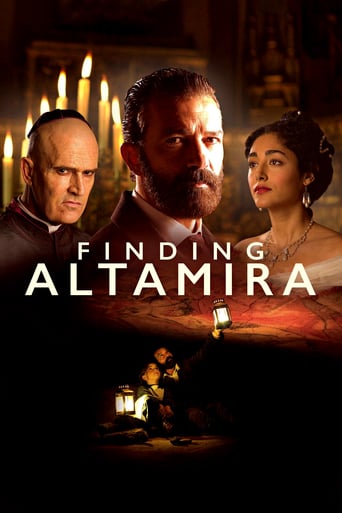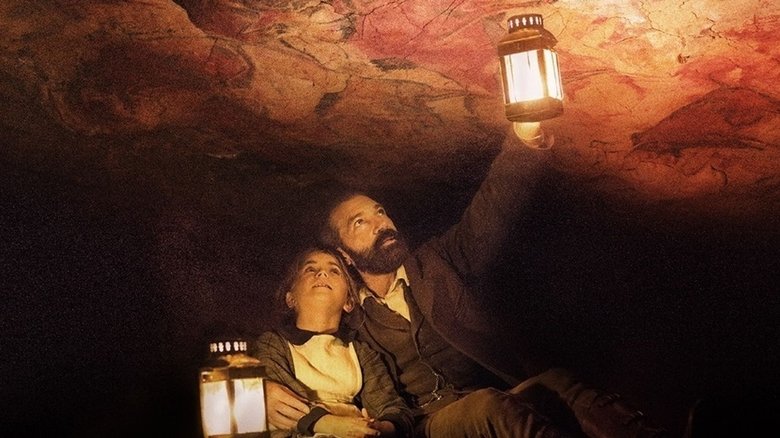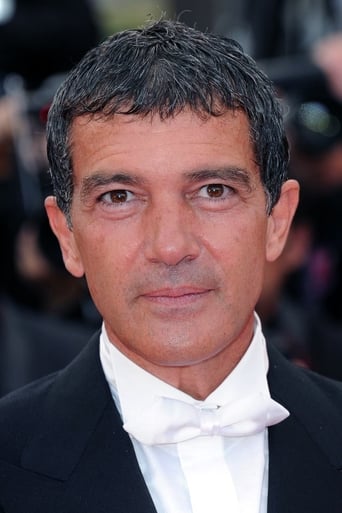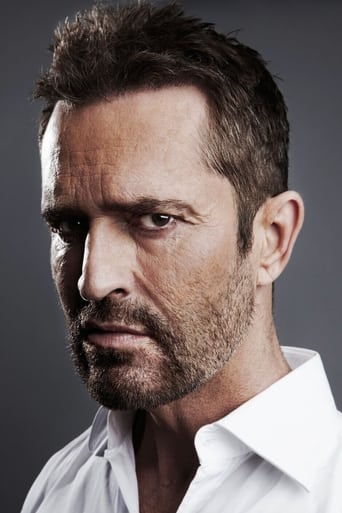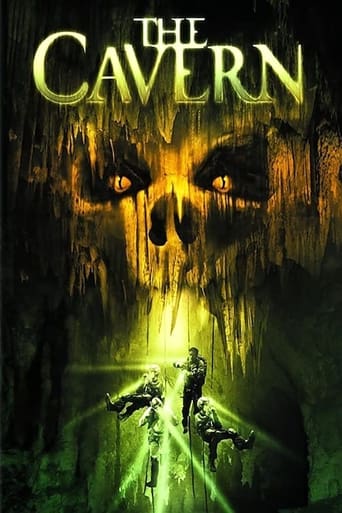Finding Altamira (2016)
The story of nine-year old Maria and her father Marcelino who, in 1879, found the first pre-historic cave paintings at the now world famous Altamira cave.
Watch Trailer
Cast
Similar titles

Reviews
To me, this movie is perfection.
One of my all time favorites.
It's not great by any means, but it's a pretty good movie that didn't leave me filled with regret for investing time in it.
The acting in this movie is really good.
This is the tale of Marcelino Sanz de Sautuola (Antonio Banderas) and his nine year old daughter Maria (Allegra Allen) who discovered the prehistoric paintings in "The Caves of Altamira". The discovery was initially proclaimed as monumental, but was then rejected by his peers as a forgery. The story opens with Maria as an adult and ends with her as adult when her humiliated father was publicly exonerated in "Mea culpa d'un sceptique" in 1902. It shows the church aggressively opposing any aspect of evolution and attempting to use the overly religious wife against her husband.It's Antonio Banderas who always does an excellent job playing a Spaniard. The acting was good, but the drama, like real life was lacking at times. We see the church forcing the daughter to stand in the corner for comparing man's wrist bones to bats etc. We see confrontation with the church in debates and Sautuola in his own world. There are a few father-daughter scenes that could have been more touching and they needed to play the Steely Dan song during the credits.I am a sucker for good history and biopic. Guide: No swearing, sex, or nudity.On a side note astronomer Frank Edge claims the works are depictions of their view of the stars/constellations. From Art History Worlds: "Altamira Cave, Spain, 15,500 years ago: star pictures in a cave painting. Edge found another famous cave at the southern edge of Magdalenian territory, with a second mural that he correlated to the stars. While the Lascaux painting depicts just those constellations along the ecliptic, Altamira's is more ambitious in scope, with the cave wall organized to represent the entire visible night sky. Selected stars are depicted among all that would have appeared through the spring nights, from sunset to sunrise, from the horizon all the way up to the pole. Those closest to the Pole, the circumpolar stars that never set, are nicely arranged across the top of the mural. At the bottom are Scorpius, Leo and Taurus, the stars then seen along the horizon. The painting is dated at 13,500 B.C."
Based upon a true story1879 in Spain, Marcelino (Antonio Banderas) discovers a cave that contains drawings from the Paleolithic Era (Stone Age). Of course, this claim is disputed as a forgery by the main Council of Anthropologists, the Catholic Church that criticized Marcelino for his scientific not religious views, the press that prints he is unfit to be a father and worse of all by Conchita (Golshifteh Farahani) his wife who sides with the Church. Most believed that the cavemen did not have the intellectual capacity to perform the drawings. Marcelino stands his ground although he is thoroughly humiliated. His 9-year old daughter Maria (Allegra Allen) who was the one who actually discovered the cave drawings of bisons stands by him. Marcelino determines how the cavemen did the drawings in a dark cave without putting soot on the ceilings. But he could not figure out why the walls showed bisons when no bison bones were ever found in the area. (The movie didn't address this either)I really liked the Confessional Scene between Conchita and the head priest when she tells him off really good and defends her husband . (Hey, I cheered when she did this) She came around when she learned how the Cavemen did the drawings without putting soot on the cave ceilings and then she tells Marcelino she wants to see the cave. It must have been her belief in him that mattered the most to Marcelino. And it should have. Marcelino learned that finding the truth isn't all that easy. After Marcelino's death, his chief critic, Emile Cartailhac (Clement Sibony), admitted his mistake and issued an apology in the main Anthropologic magazine. The acting all around is good, but when everyone spoke with a Spanish accent it was sometimes difficult to understand all dialogues, but we got the idea eventually. The young Maria was the only one who spoke clearly without any accent. (You go girl!)Go to Wikipedia to learn more about these famous Altamira drawings from the Paleolithic Era. Wikipedia says some of the drawings in that cave go back 35,000+ years. (7/10)Violence: No. Sex: No. Nudity: No. Language: No.
I give this movie full marks. It may not be Lawrence of Arabia or a block buster but it is fine cinema nevertheless. For what the producers did with their budget and the location and interior shots - they did very well. One reviewer remarked that the movie did not credit the true discoverer of the cave. However if you watch carefully it is clear that credit is given to the huntsman who actually did find the entrance in 1858. I enjoyed the production thoroughly. this is the perfect movie for those who enjoy historical drama. Well paced with great photography and great location sets. I have family in the film industry living in Hollywood and it is often a great battle between the corporate financiers who want as much sex and nudity with blond bimbos to boost sales and are constantly ruining potentially good cinema by inserting complete dross into otherwise good scripts. Good cinema is becoming rare. Someone has taken a punt on this movie and my bet is that it won't rake in millions - but it gets my vote and I loved it. In May 2017 I will be visiting Altamira and will remember this movie and certainly want to read more about its discovery. Chris Lachman, Adelaide, Australia
Pablo Picasso wrote that "after Altamira, all is decadence - we have invented nothing." This fascinating and aesthetically splendid film tells the story of the discovery of one of the earliest works of art of mankind, the famous Paleolithic cave paintings of animals, the so-called Cave of Altamira near the town of Santillana del Mar and west of Santander in Cantabria, Spain.Antonio Banderas is outstanding as the impassioned "amateur" scientist responsible for alerting the world to the transcendent discovery of the caves, initially found by a dog and a shepherd who stumbled across the opening. Banderas plays the role of Marcelino Sanz de Sautuola y de la Pedrueca, who, along with his eight-year-old daughter, Maria, first recognized the significance of the mysterious wall paintings. The film starts in 1878 in Cantabria and ends in 1902, the date when the wall paintings were formally acknowledged as authentic.The film tells the story of the struggle and humiliation of Sautuola, who faced hostility from both the church and the recidivist scientists, who refused to believe that the magnificent paintings could have been executed by artists around the year 10,000 B.C.E.It turns out that paintings may have belonged to the Aurignacian culture, 35,600 years ago. Sautuola carefully analyzed the evidence and came to realize the significance of the find. The film effectively develops the family drama, focusing on the resistance of Sautuola's wife, Conchita, who finally comes around to believing in the theory of her husband. Conchita also takes a strong stand against the local Monsignor, who nearly invokes the Spanish Inquisition in his attempt to consign Sautuola to hell for his scientific views."Altamira" was directed by Hugh Hudson, the filmmaker who produced one of the most beautifully shot films of the previous century, "Chariots of Fire." "Altamira" has the same polished look with breathtaking scenes of the countryside in Northern Spain.This film could have been a dry "history channel" dramatization. Instead, it is a superbly crafted and aesthetically brilliant feature film, one that is not to be missed for lovers of art and culture.
